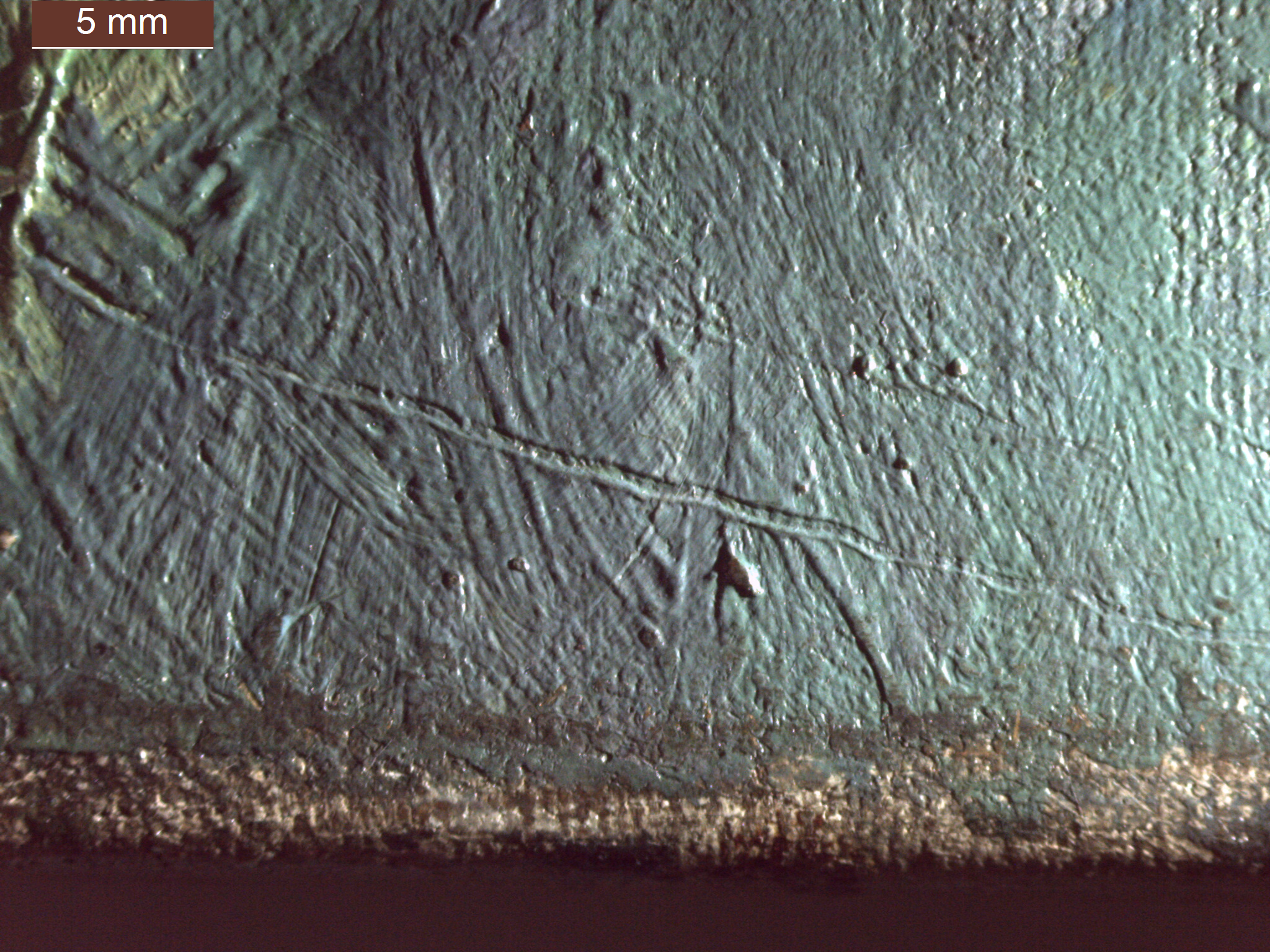![]()
Paul Cezanne, Quarry at Bibémus, 1895–1900
| Artist | Paul Cezanne, French, 1839–1906 |
| Title | Quarry at Bibémus |
| Object Date | 1895-1900 |
| Alternate and Variant Titles | Carrière de Bibémus; Rochers rouges surmontés d’un arbre un peu parasol |
| Medium | Oil on canvas |
| Dimensions (Unframed) | 25 3/4 x 21 1/2 in. (65.4 x 54.6 cm) |
| Credit Line | The Nelson-Atkins Museum of Art. Gift of Henry W. and Marion H. Bloch, 2015.13.7 |
Catalogue Entry
Citation
Chicago:
Brigid M. Boyle, “Paul Cezanne, Quarry at Bibémus, 1895–1900,” catalogue entry in ed. Aimee Marcereau DeGalan French Paintings and Pastels, 1600–1945: The Collections of the Nelson-Atkins Museum of Art (Kansas City: The Nelson-Atkins Museum of Art, 2021), https://doi.org/10.37764/78973.5.710.5407
MLA:
Boyle, Brigid M. “Paul Cezanne, Quarry at Bibémus, 1895–1900,” catalogue entry. French Paintings and Pastels, 1600–1945: The Collections of the Nelson-Atkins Museum of Art, edited by Aimee Marcereau DeGalan, The Nelson-Atkins Museum of Art, 2021. doi: 10.37764/78973.5.710.5407.
The violence inflicted on the stone by men becomes a tragic motif. The very earth seems to struggle in the midst of torments worthy of Dante’s Inferno. All of this is a pretext for Cézanne to express his inner turmoil.4Venturi, “Sur les dernières années de Cézanne,” 35. “La violence exercée par les hommes sur la pierre devient un motif tragique. La terre même semble se débattre au milieu de tourments dignes de l’Enfer dantesque. Tout est prétexte pour Cézanne à extérioriser son orage intérieur.” All translations are by the author.
Venturi’s rhetoric of mortality and personal strife reverberates in the writings of other scholars. T. J. Clark famously characterized the view from Bibémus as “at one level a view from the tomb,” a sentiment later echoed by Philip Conisbee, who compared the experience of standing before one of Cezanne’s quarry paintings to “being lowered into a funeral vault.”5See T. J. Clark, “Phenomenality and Materiality in Cézanne,” in Tom Cohen, Barbara Cohen, J. Hillis Miller, and Andrzej Warminski, eds., Material Events: Paul de Man and the Afterlife of Theory (Minneapolis: University of Minnesota Press, 2001), 93–113, at 111; and Philip Conisbee, “Le Tholonet, Bibémus, and the Château Noir,” in Philip Conisbee and Denis Coutagne, Cézanne in Provence, exh. cat. (Washington: National Gallery of Art, 2006), 190–229, at 195. Alex Danchev expanded on Clark’s metaphor, describing Cezanne’s quarry scenes as “an evocation of ‘self-entombment.'”6Alex Danchev, Cézanne: A Life (New York: Pantheon Books, 2012), 320.
By contrast, the 2020 exhibition Cézanne: The Rock and Quarry Paintings—which reunited two of the aforementioned landscapes in Minotaure, including the Nelson-Atkins picture—investigated not the artist’s allusions to death, the afterlife, or psychological anguish in his Bibémus scenes, but rather his fascination with geology.7The exhibition opened at the Princeton University Art Museum on March 7, 2020, but closed one week later due to the coronavirus pandemic. It was originally slated to travel to the Royal Academy of Arts, London, but ongoing health concerns precluded a second venue. The Princeton University Art Museum’s introductory panel emphasized Cezanne’s friendship with the geologist Antoine-Fortuné Marion, as well as the materiality of his oil paints. During the exhibition’s opening celebration, the contemporary artist Terry Winters (b. 1949) commented to the curator, John Elderfield: “Paint is colored mud. It’s really the same material as the rocks themselves.”8“Cézanne: The Rock and Quarry Paintings, A Conversation with John Elderfield and Terry Winters,” presented at Princeton University, McCosh Hall, March 7, 2020. Caroline I. Harris made a similar observation during a virtual panel discussion, noting that Cezanne sought to establish “a one-to-one equivalency between areas of rock and thick paint.” See “Painting the Mountains: Cézanne’s Rock and Quarry Canvases,” hosted by the Princeton University Art Museum, April 2, 2020. This down-to-earth observation (pun intended) emblemizes a shift not simply in the scholarship on Cezanne’s quarry paintings but also in art history more broadly, as scholars give greater attention to artists’ raw materials.
Cezanne first explored the Bibémus quarry in his youth, accompanied by boyhood friends and classmates such as Joseph Huot.9John Elderfield, ed., Cézanne: The Rock and Quarry Paintings, exh. cat. (New Haven: Yale University Press, 2020), 103. However, he was in his fifties before he undertook the Nelson-Atkins picture and other paintings of this abandoned site. Actively excavated during Roman times, the quarry fell into disuse for several centuries, and it was not until the 1600s that local workers began extracting stone again.10Nina M. Athanassoglou-Kallmyer, Cézanne and Provence: The Painter in his Culture (Chicago: University of Chicago Press, 2003), 170–71. Quarry operations ceased once more during the 1800s, though scholars disagree on the precise date.11Athanassoglou-Kallmyer claims that the quarry was dormant by the 1830s, but Anna Swinbourne suggests that activity continued until 1885. See Athanassoglou-Kallmyer, Cézanne and Provence, 170–71; and Swinbourne, “Bibémus,” in Elderfield, The Rock and Quarry Paintings, 103–6, at 103. Many still-extant buildings in Cezanne’s hometown, including the Château de la Gaude and the Hôtel de Forbin, were constructed using ocher-colored stones particular to the Bibémus region.12These former private residences have since been converted into a luxury hotel and a bank, respectively. For the Château de la Gaude’s construction, see Claude Frégnac, Merveilles des châteaux de Provence (Paris: Hachette, 1965), 300. Their yellowish-red facades struck the Swiss painter Henri Dobler (1863–1941) as quite distinctive: “Indeed, Aix will always stand out from other artistic cities because of the color of its stones, owing to the proximity of the Bibémus quarries.”13Henri Dobler, Les écoles d’architecture et d’art décoratif des XVIIme et XVIIIme siècles à Aix, Capitale et Siège du Gouvernement de la Provence (Marseille: Editions Artistiques Véga, 1910), ix. “Aix en effet se distinguera toujours des autres villes d’Art par la couleur de ses pierres due à la proximité des carrières de Bibémus.” Cezanne, too, was intrigued by their unique coloring and striations. Going straight to the source, he painted the Bibémus quarry repeatedly during the mid- to late 1890s.14Scholars continue to revise the dating of Cezanne’s quarry paintings. Some historians date the Nelson-Atkins picture to 1898–1900, but others propose 1895–1900. See Walter Feilchenfeldt, Jayne Warman, and David Nash, “La Carrière de Bibémus, 1898–1900 (FWN 318),” The Paintings, Watercolors and Drawings of Paul Cezanne: An Online Catalogue Raisonné, accessed March 11, 2020, https://www.cezannecatalogue.com/catalogue/entry.php?id=814; and John Elderfield and Ariel Kline, entry for cat. nos. 16–18 in Elderfield, The Rock and Quarry Paintings, 119–25, at 119.
To facilitate his study of this landmark, Cezanne rented a nearby cabanon, or
cabin, and stored his easel and other supplies there between painting sessions.15Athanassoglou-Kallmyer, Cézanne and Provence, 131.
Gaining entry to the quarry was no easy feat, but its inaccessibility suited
Cezanne’s temperament, since he preferred to paint alone sur le motifsur le motif: French for “in front of the object.” A term used for sketching or painting from life..16According to Anna Swinbourne, the quarry could be reached by coach or on foot, but both routes involved scaling steep hills. See Swinbourne, “Bibémus,” 104.
In Ambroise Vollard’s posthumous biography of the artist, he relates a secondhand
tale about Cezanne’s irritation at having his solitude interrupted. As the story
goes, an elderly woman settled herself in Cezanne’s vicinity one afternoon and
began to knit. Although she paid him little attention, her presence so annoyed
Cezanne that he packed up his painting equipment and left.17Ambroise Vollard, Paul Cézanne (Paris: Galerie A. Vollard, 1914), 99.
Apocryphal or not, this anecdote offers insight into not only Cezanne’s preferred
working method but also the quarry’s unique appeal as a peaceful refuge.

Cezanne’s best-known representation of the Bibémus quarry is perhaps the version belonging to the Museum Folkwang in Essen (Fig. 2). In many ways, it is the antithesis of the Kansas City painting. Horizontally oriented and more monumental in size, the Essen canvas is dominated by a rocky escarpment that fills three-quarters of its picture space. The wall’s height is amplified by its sheer cliff faces, jagged contours, and sparse undergrowth. The diminutive trees along its upper ridge seem almost to be an afterthought. By comparison, the Nelson-Atkins picture appears lush with life. Greenery surrounds the quarry wall on four sides, threatening to overtake it. An umbrella pine towers above the canopy and makes the Bibémus cliffs look oddly diminished. In fact, this tree is so essential to the composition that Vollard titled the painting Rochers rouges surmontés d’un arbre un peu parasol (Red Rocks Crowned by an Umbrella-Like Tree) in one of his stock books.18See National Gallery of Art, Gallery Archives, John Rewald Papers (RG43), Ambroise Vollard Research Files (43A5.8), box 54, folder 8, Vollard stock book A, no. 3653. Vollard’s title was probably his own invention, rather than one approved by Cezanne.
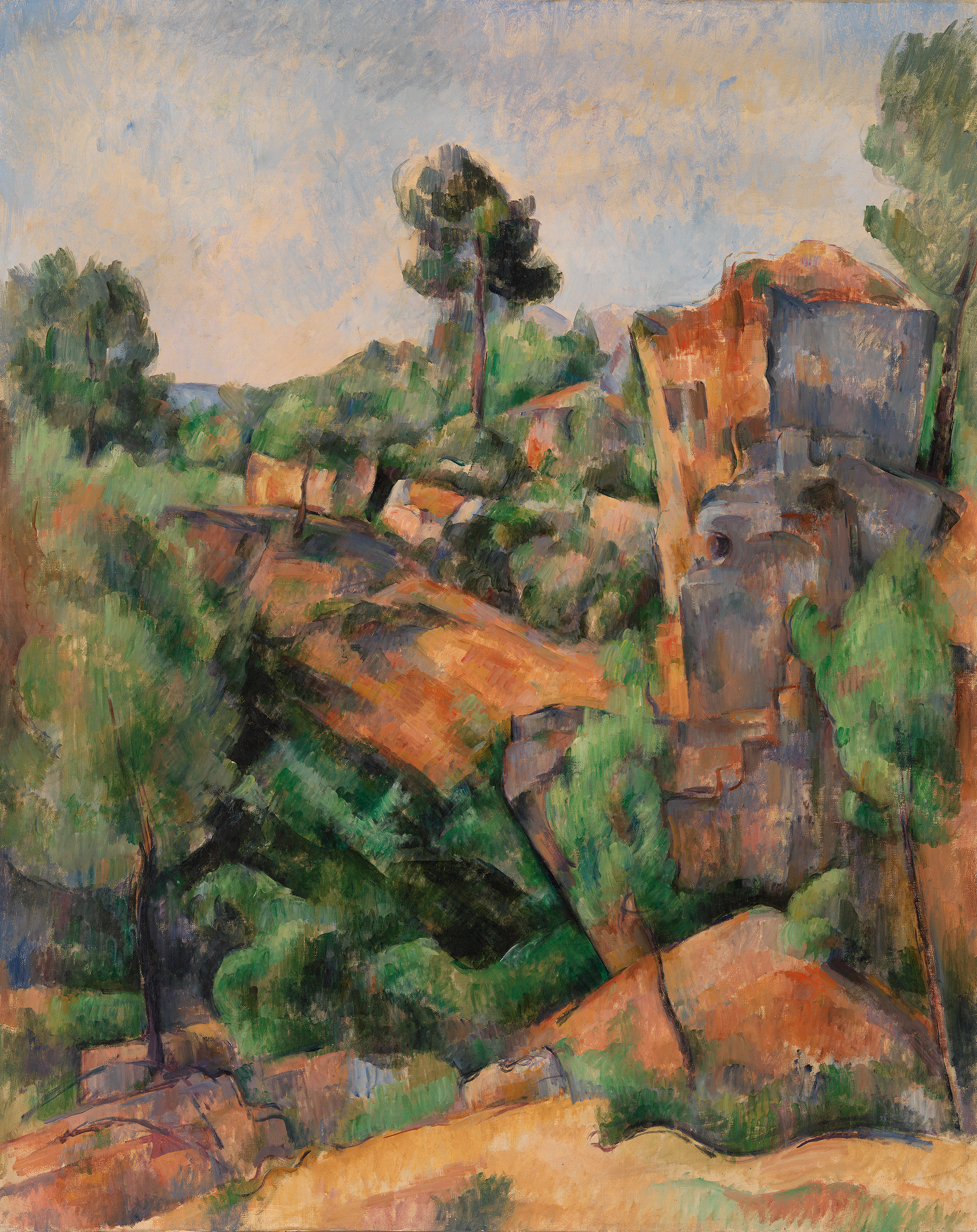 Fig. 3. Paul Cezanne, The Bibémus Quarry, ca. 1895, oil on canvas, 36 3/16 x 28 11/16 in. (92 x 72.8 cm), Barnes Foundation, Philadelphia, BF34
Fig. 3. Paul Cezanne, The Bibémus Quarry, ca. 1895, oil on canvas, 36 3/16 x 28 11/16 in. (92 x 72.8 cm), Barnes Foundation, Philadelphia, BF34
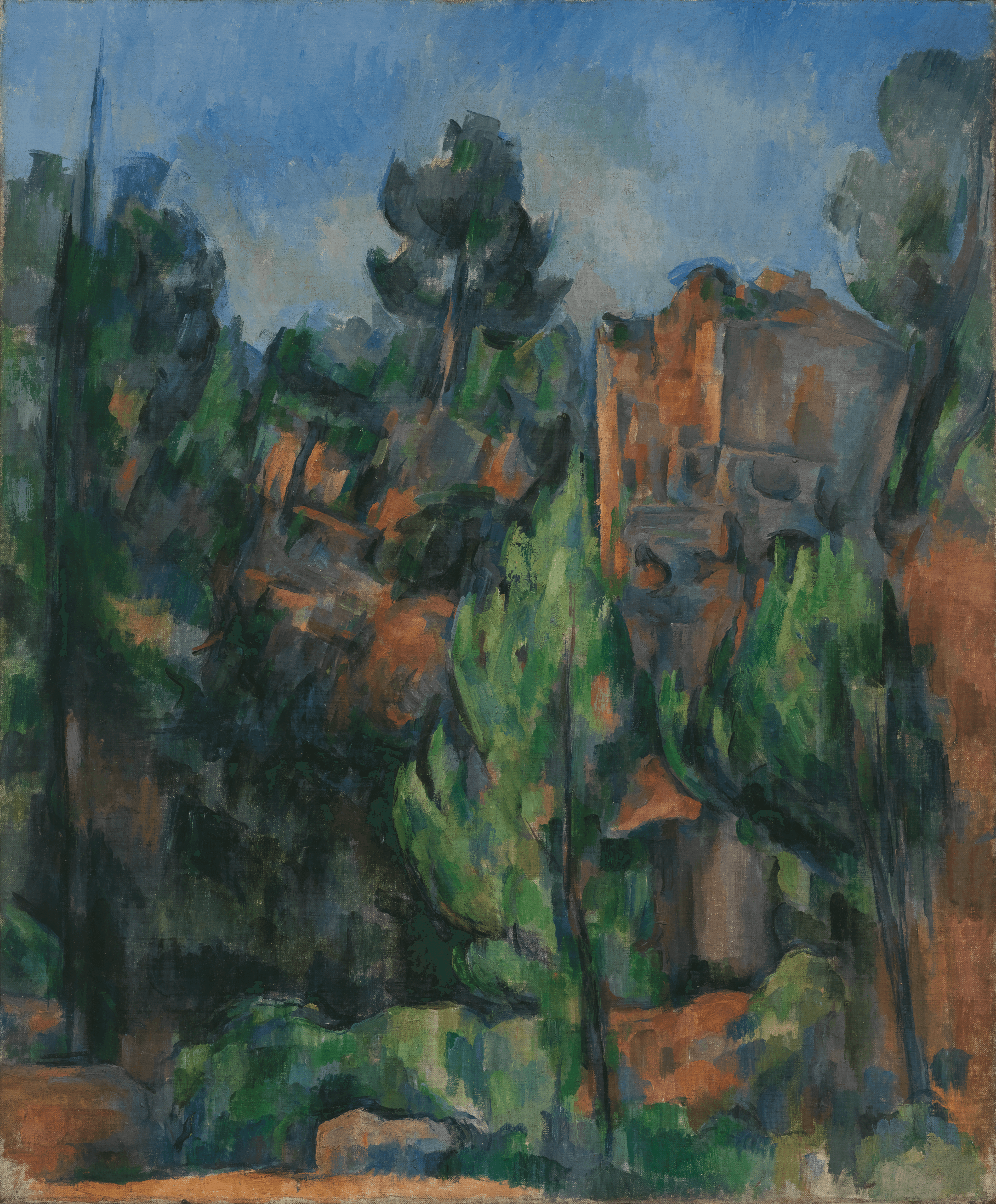 Fig. 4. Paul Cezanne, The Bibémus Quarry, ca. 1898, oil on canvas, 25 5/8 x 21 1/4 in. (65 x 54 cm), private collection
Fig. 4. Paul Cezanne, The Bibémus Quarry, ca. 1898, oil on canvas, 25 5/8 x 21 1/4 in. (65 x 54 cm), private collection
The umbrella pine, also known as a stone pine, is a coniferous evergreen that
thrives along the Mediterranean coast. So ubiquitous in southern France are these
trees with their characteristic profile that, by the late nineteenth century, they
became associated with this region in the European visual imagination. For example,
four umbrella pines feature conspicuously in an 1896 lithographic poster by F. Hugo
d’Alesi (Romanian, 1849–1906) that advertises the Provençal town of Hyères (Fig.
5). Standing sentinel over a verdant landscape filled with flowers, sheep, and
buildings, the pines invite viewers to explore this idyllic community. Likewise,
the Neo-Impressionist painter Paul Signac (1863–1935) painted numerous umbrella
pines when he moved to Saint Tropez, another French Riviera town, in 1892.20See, for example, Paul Signac, The Bonaventure Pine, 1893, oil on canvas, 25 7/8 x 31 7/8 in. (65.7 x 81 cm), Museum of Fine Arts, Houston, 74.142.
Thus, in the Nelson-Atkins picture the umbrella pine functions not only as a
compositional anchor, but also as a visual shorthand for Provence, the area where
Cezanne spent much of his life and felt most comfortable.
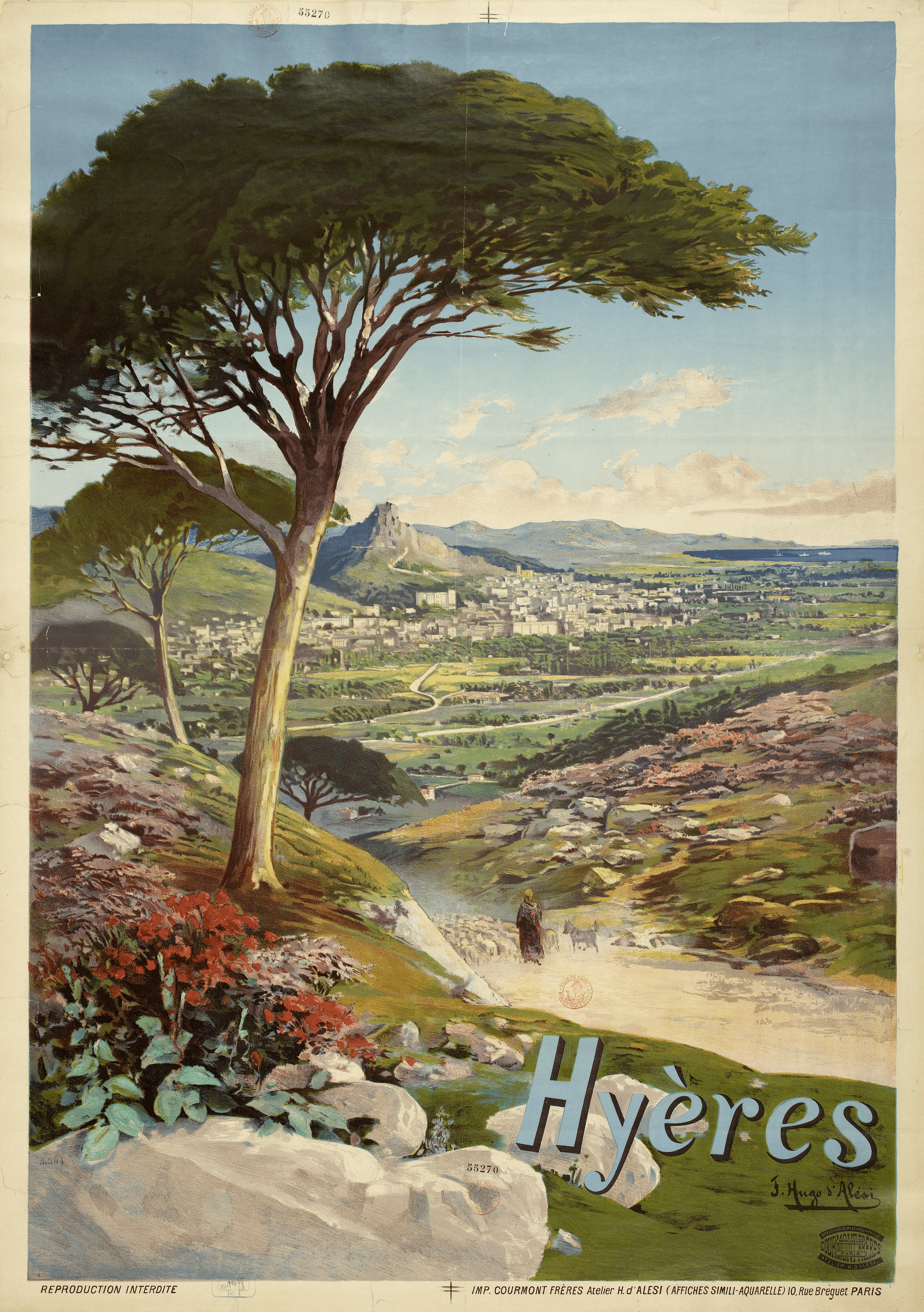
In the century or so since Cezanne's death, the Bibémus quarry has become yet another tourist destination for the artist's legions of fans. While the quarry was not officially municipal property until 1998, intrepid travelers explored the site much earlier.21Michel Fraisset, “La mise en tourisme de l’Atelier de Cézanne,” in Atelier Cézanne, 1902–2002: Le Centenaire (Aix-en-Provence: Société Paul Cézanne, 2003), 176. The New York Times published an article in 1970 that outlined one- and two-day itineraries to Aix-en-Provence for visitors wishing to “return to Cézanne's sources,” including the quarry.22Thomas R. Parker, “Cezanne Landscape Country: Picture Windows or National Park?,” New York Times, August 9, 1970. As such outings became more popular, many photographers published coffee table books or travel blogs offering practical advice about retracing the artist's footsteps.23See, for example, Derek Fell, Cezanne’s Garden (New York: Simon and Schuster, 2003), 115; and Phil Haber, “In the Footsteps of Cézanne, Part III: The Bibémus Quarries,” Phil Haber’s Photography Notes, November 27, 2011, https://philhaber.com/2011/11/27/in-the-footsteps-of-cezanne-part-iii-the-bibemus-quarries. Today, guided tours of the Bibémus quarry depart regularly from the Aix-en-Provence Tourist Office. A website promoting these excursions shows a dozen sightseers walking beneath two enormous, intersecting rock faces at the quarry.24See the feature image at “Aix-en-Provence, ville de Cezanne,” accessed March 12, 2020, http://www.cezanne-en-provence.com/wp-content/uploads/2015/01/page-visite-carrieres.png. Some take photographs to document the experience, while others reach their arms upward to touch the coarse limestone. Were Cezanne still alive, he would surely lament these crowds as an unwelcome intrusion, but their presence is a testament to the captivating power of his landscape paintings, including Quarry at Bibémus.
Notes
-
Lionello Venturi, “Sur les dernières années de Cézanne,” Minotaure, no. 9 (1936): 33–39.
-
Venturi deliberately eschewed “les œuvres les plus célèbres, qui ont été reproduites maintes fois,” in favor of “des peintures et des aquarelles inédites.” See Venturi, “Sur les dernières années de Cézanne,” 35.
-
The fourth painting features trees and rocks in the environs of the Château Noir, a nineteenth-century bastide (manor house) where Cezanne was a tenant from 1887 to 1902. See Trees and Rocks, ca. 1900, oil on canvas, 24 x 19 11/16 in. (61 x 50 cm), Dixon Gallery and Gardens, Memphis, TN (FWN 334).
-
Venturi, “Sur les dernières années de Cézanne,” 35. “La violence exercée par les hommes sur la pierre devient un motif tragique. La terre même semble se débattre au milieu de tourments dignes de l’Enfer dantesque. Tout est prétexte pour Cézanne à extérioriser son orage intérieur.” All translations are by the author.
-
See T. J. Clark, “Phenomenality and Materiality in Cézanne,” in Tom Cohen, Barbara Cohen, J. Hillis Miller, and Andrzej Warminski, eds., Material Events: Paul de Man and the Afterlife of Theory (Minneapolis: University of Minnesota Press, 2001), 93–113, at 111; and Philip Conisbee, “Le Tholonet, Bibémus, and the Château Noir,” in Philip Conisbee and Denis Coutagne, Cézanne in Provence, exh. cat. (Washington: National Gallery of Art, 2006), 190–229, at 195.
-
Alex Danchev, Cézanne: A Life (New York: Pantheon Books, 2012), 320.
-
The exhibition opened at the Princeton University Art Museum on March 7, 2020, but closed one week later due to the coronavirus pandemic. It was originally slated to travel to the Royal Academy of Arts, London, but ongoing health concerns precluded a second venue.
-
“Cézanne: The Rock and Quarry Paintings, A Conversation with John Elderfield and Terry Winters,” presented at Princeton University, McCosh Hall, March 7, 2020. Caroline I. Harris made a similar observation during a virtual panel discussion, noting that Cezanne sought to establish “a one-to-one equivalency between areas of rock and thick paint.” See “Painting the Mountains: Cézanne’s Rock and Quarry Canvases,” hosted by the Princeton University Art Museum, April 2, 2020.
-
John Elderfield, ed., Cézanne: The Rock and Quarry Paintings, exh. cat. (New Haven: Yale University Press, 2020), 103.
-
Nina M. Athanassoglou-Kallmyer, Cézanne and Provence: The Painter in his Culture (Chicago: University of Chicago Press, 2003), 170–71.
-
Athanassoglou-Kallmyer claims that the quarry was dormant by the 1830s, but Anna Swinbourne suggests that activity continued until 1885. See Athanassoglou-Kallmyer, Cézanne and Provence, 170–71; and Swinbourne, “Bibémus,” in Elderfield, The Rock and Quarry Paintings, 103–6, at 103.
-
These former private residences have since been converted into a luxury hotel and a bank, respectively. For the Château de la Gaude’s construction, see Claude Frégnac, Merveilles des châteaux de Provence (Paris: Hachette, 1965), 300.
-
Henri Dobler, Les écoles d’architecture et d’art décoratif des XVIIme et XVIIIme siècles à Aix, Capitale et Siège du Gouvernement de la Provence (Marseille: Editions Artistiques Véga, 1910), ix. “Aix en effet se distinguera toujours des autres villes d’Art par la couleur de ses pierres due à la proximité des carrières de Bibémus.”
-
Scholars continue to revise the dating of Cezanne’s quarry paintings. Some historians date the Nelson-Atkins picture to 1898–1900, but others propose 1895–1900. See Walter Feilchenfeldt, Jayne Warman, and David Nash, “La Carrière de Bibémus, 1898–1900 (FWN 318),” The Paintings, Watercolors and Drawings of Paul Cezanne: An Online Catalogue Raisonné, accessed March 11, 2020, https://www.cezannecatalogue.com/catalogue/entry.php?id=814; and John Elderfield and Ariel Kline, entry for cat. nos. 16–18 in Elderfield, The Rock and Quarry Paintings, 119–25, at 119.
-
Athanassoglou-Kallmyer, Cézanne and Provence, 131.
-
According to Anna Swinbourne, the quarry could be reached by coach or on foot, but both routes involved scaling steep hills. See Swinbourne, “Bibémus,” 104.
-
Ambroise Vollard, Paul Cézanne (Paris: Galerie A. Vollard, 1914), 99.
-
See National Gallery of Art, Gallery Archives, John Rewald Papers (RG43), Ambroise Vollard Research Files (43A5.8), box 54, folder 8, Vollard stock book A, no. 3653. Vollard’s title was probably his own invention, rather than one approved by Cezanne.
-
John Elderfield and Ariel Kline recently proposed that the Nelson-Atkins canvas might depict “that same single tree grown more fully.” See Elderfield and Kline, entry for cat. nos. 16–18 in Elderfield, The Rock and Quarry Paintings, 119.
-
See, for example, Paul Signac, The Bonaventure Pine, 1893, oil on canvas, 25 7/8 x 31 7/8 in. (65.7 x 81 cm), Museum of Fine Arts, Houston, 74.142.
-
Michel Fraisset, “La mise en tourisme de l’Atelier de Cézanne,” in Atelier Cézanne, 1902–2002: Le Centenaire (Aix-en-Provence: Société Paul Cézanne, 2003), 176.
-
Thomas R. Parker, “Cezanne Landscape Country: Picture Windows or National Park?,” New York Times, August 9, 1970.
-
See, for example, Derek Fell, Cezanne’s Garden (New York: Simon and Schuster, 2003), 115; and Phil Haber, “In the Footsteps of Cézanne, Part III: The Bibémus Quarries,” Phil Haber’s Photography Notes, November 27, 2011, https://philhaber.com/2011/11/27/in-the-footsteps-of-cezanne-part-iii-the-bibemus-quarries.
-
See the feature image at “Aix-en-Provence, ville de Cezanne,” accessed March 12, 2020, http://www.cezanne-en-provence.com/wp-content/uploads/2015/01/page-visite-carrieres.png.
Technical Entry
Citation
Chicago:
Diana M. Jaskierny, “Paul Cezanne, Quarry at Bibémus, 1895–1900,” technical entry in ed. Aimee Marcereau DeGalan French Paintings and Pastels, 1600–1945: The Collections of the Nelson-Atkins Museum of Art (Kansas City: The Nelson-Atkins Museum of Art, 2021), https://doi.org/10.37764/78973.5.710.2088
MLA:
Jaskierny, Diana M. “Paul Cezanne, Quarry at Bibémus, 1895–1900,” technical entry. French Paintings and Pastels, 1600–1945: The Collections of the Nelson-Atkins Museum of Art, edited by Aimee Marcereau DeGalan, TheNelson-Atkins Museum of Art, 2021. doi: 10.37764/78973.5.710.2088.
Quarry at Bibémus is mounted on a commercially made five-member, wooden stretcherstretcher: A wooden structure to which the painting’s canvas is attached. Unlike strainers, stretchers can be expanded slightly at the joints to improve canvas tension and avoid sagging due to humidity changes or aging. possibly original to the painting. The corner joints are open mortise and tenon, while the crossbar joints appear to be blind mortise and tenon. During a conservation treatment of the painting in 2019, the canvas was temporarily removed from the stretcher. At this time, it was discovered that only one set of tack holes are present on the top, left, and right edges of the stretcher, indicating that this stretcher had not been re-used. The bottom edge, however, has two sets of holes, one set corresponding to those on the canvas, and one set that cannot be explained.1Diana M. Jaskierny, May 1, 2020, treatment report, Nelson-Atkins conservation file, no. 2015.13.7.
The painting was completed on a plain weaveplain weave: A basic textile weave in which one weft thread alternates over and under the warp threads. Often this structure consists of one thread in each direction, but threads can be doubled (basket weave) or tripled to create more complex plain weave. Plain weave is sometimes called tabby weave. canvas, estimated to be linen, and corresponds in size to the French standard canvasstandard-format supports: Commercially prepared supports available through art suppliers, which gained popularity in the nineteenth century during the industrialization of art materials. Available in three formats figure (portrait), paysage (landscape), and marine (marine), these were numbered 1 through 120 to indicate their size. For each numbered size, marine and paysage had two options available: a larger format (haute) and smaller (basse) format. no. 15 figure. On the canvas reverse, there are several canvas stampscanvas stamp: An ink stamp, often present on the reverse of the canvas, signifying the company that sold or prepared the canvas. As these companies sometimes performed framing and restorations, these stamps could also reflect these services., including one indicating that the support was purchased from M. Chabod while the artist supplierartist supplier(s): Also called colormen and color merchants. Artist suppliers prepared materials for artists. This tradition dates back to the Medieval period, but the industrialization of the nineteenth century increased their commerce. It was during this time that ready-made paints in tubes, commercially prepared canvases, and standard-format supports were available to artists for sale through these suppliers. It is sometimes possible to identify the supplier from stamps or labels found on the reverse of the artwork (see canvas stamp). was in residence at Rue Jacob 20 (Fig. 6).2After taking over J. Bovard’s business in 1862, M. Chabod and his company supplied materials to artists throughout the nineteenth century. His widow continued the business into the early twentieth century, before selling it to Vignol. During the attributed dates of this painting, M. Chabod et Cie operated out of “Rue Jacob 20,” as is indicated on this painting’s canvas stamp. Pascal Labreuche, “Chabod,” Guide Labreuche: Guide historique des fournisseurs de matériel pour artists à Paris 1790–1960, 2018, accessed January 14, 2020, https://www.labreuche-fournisseurs-artistes-paris.fr/maison/bovard-chabod (site under construction as of January 6, 2021).
The ground layerground layer: An opaque preparatory layer applied to the support, either commercially or by the artist, to prevent absorption of the paint into the canvas or panel. See also priming layer. is opaque white, or slightly off-white, and is likely lead-white based. It is thinly and evenly applied, with an even application found within the corner folds, indicating that the canvas was industrially prepared at a larger scale and later cut down for this stretcher size. Cuspingcusping: A scalloped pattern along the canvas edges that relates to how the canvas was stretched. Primary cusping reveals where tacks secured the canvas to the support while the ground layer was applied. Secondary cusping can form when a pre-primed canvas is re-stretched by the artist prior to painting. found here corresponds with the tack holes on all four tacking marginstacking margins: The outer edges of canvas that wrap around and are attached to the stretcher or strainer with tacks or staples. See also tacking edge. and is likely secondary cusping, occurring after the industrially primed canvas was affixed to the stretcher (Fig. 7).3Ernst van de Wetering, Rembrandt: The Painter at Work (Berkeley: University of California Press, 2000), 116.
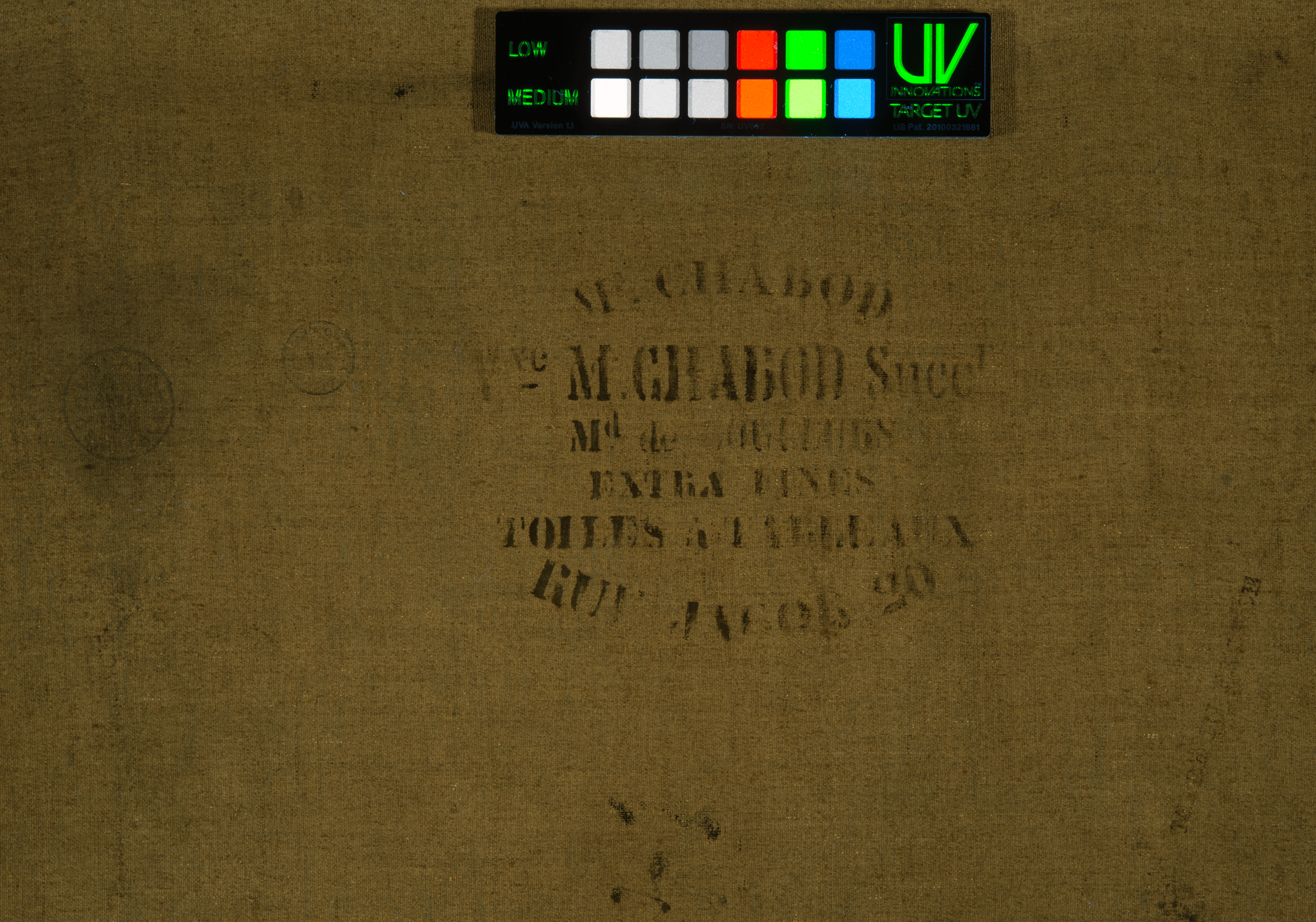 Fig. 6. Detail of Chabod canvas stamp in ultraviolet-induced visible fluorescence, Quarry at Bibémus (1898–1900)
Fig. 6. Detail of Chabod canvas stamp in ultraviolet-induced visible fluorescence, Quarry at Bibémus (1898–1900)
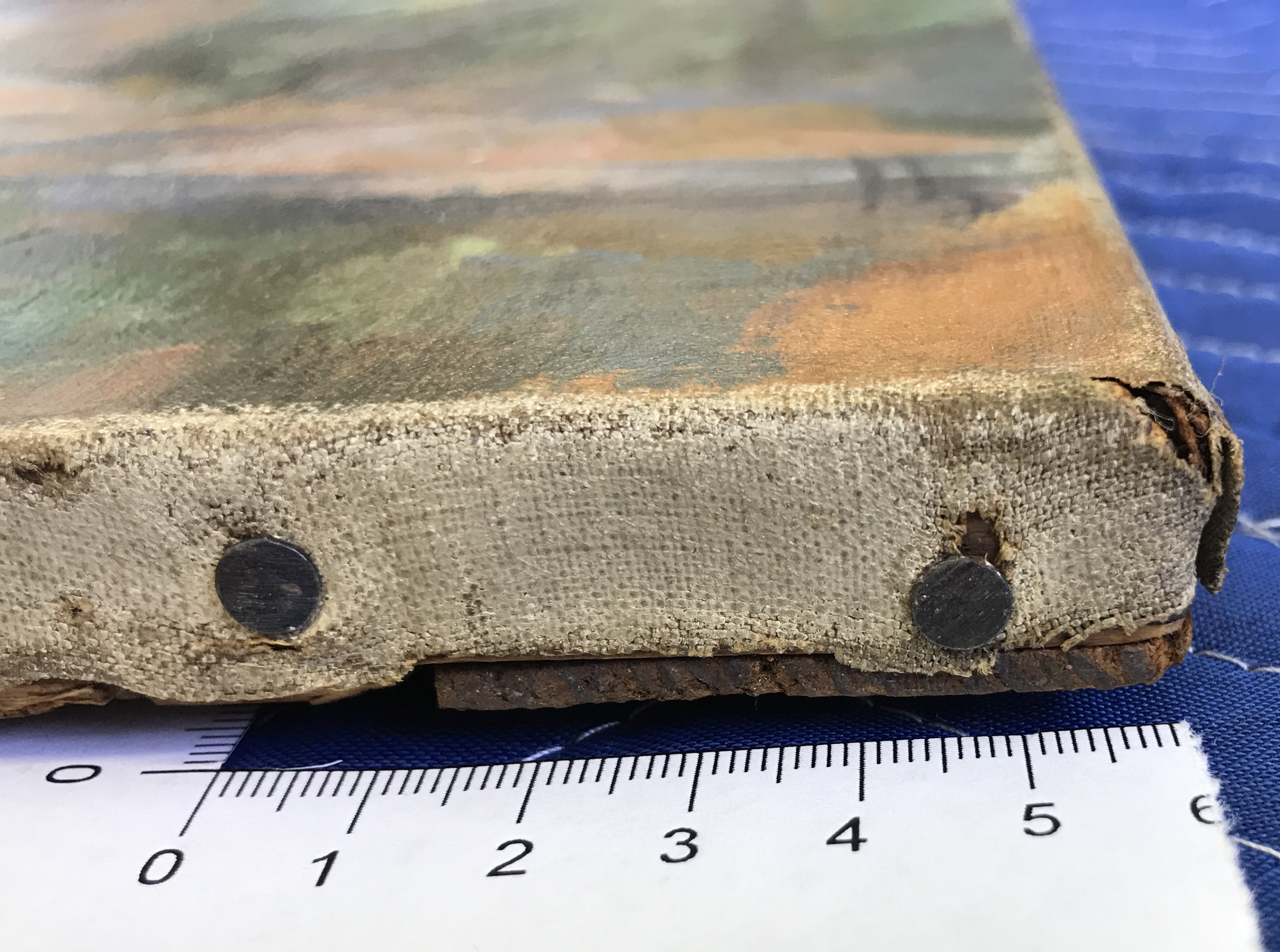 Fig. 7. Detail of secondary cusping, Quarry at Bibémus (1898–1900)
Fig. 7. Detail of secondary cusping, Quarry at Bibémus (1898–1900)
 Fig. 8. Photomicrograph of exposed ground and possible blue wash remnants, Quarry at Bibémus (1898–1900)
Fig. 8. Photomicrograph of exposed ground and possible blue wash remnants, Quarry at Bibémus (1898–1900)
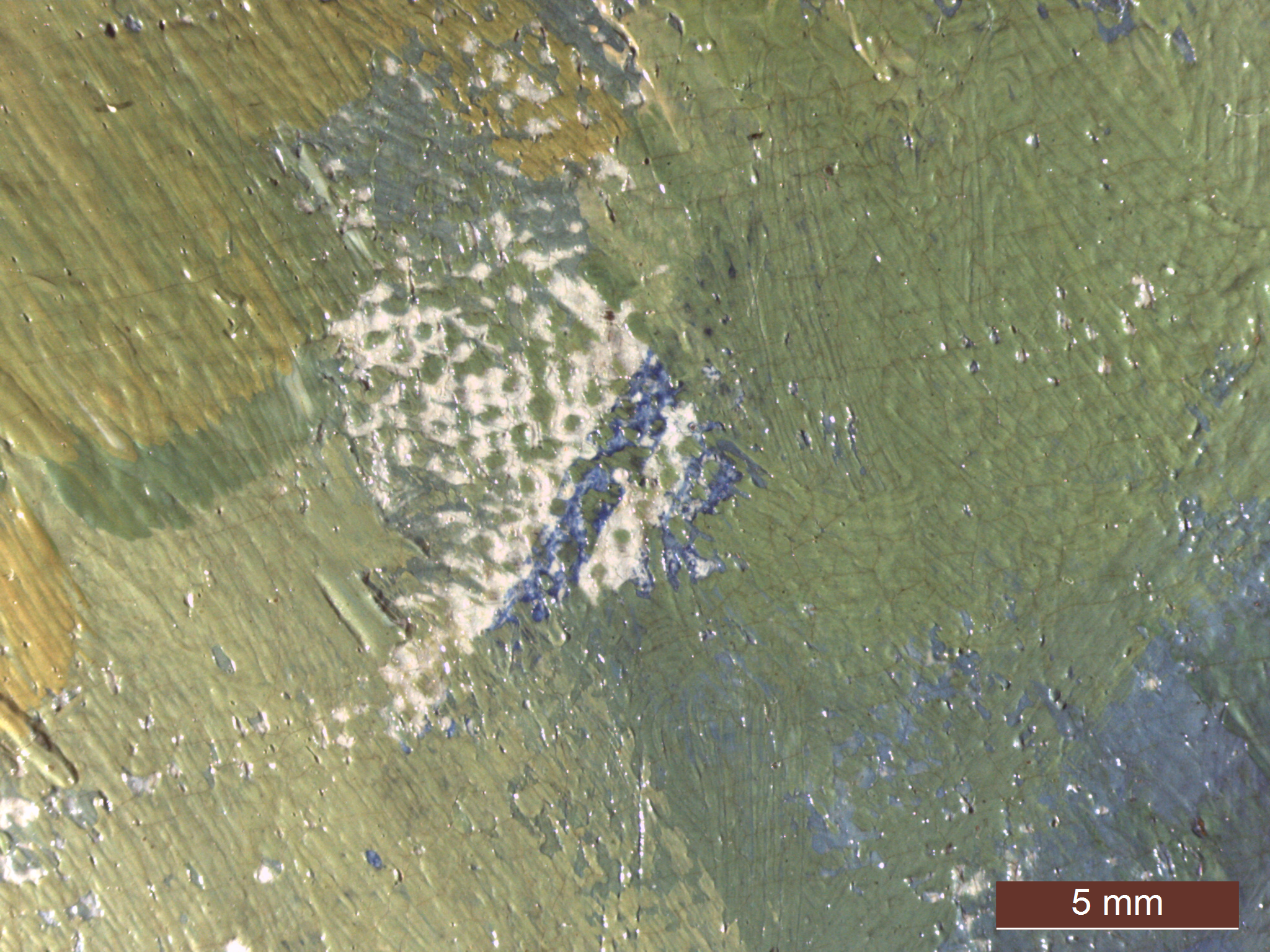 Fig. 9. Photomicrograph of blue painted line beneath paint passages, Quarry at Bibémus (1898-1900)
Fig. 9. Photomicrograph of blue painted line beneath paint passages, Quarry at Bibémus (1898-1900)
The paint layer was applied with varying levels of thickness, ranging from thin washes to more heavily bodied paint, however there is relatively little impastoimpasto: A thick application of paint, often creating texture such as peaks and ridges.. The areas of more heavily bodied paint exhibit a higher sheen compared to the thinly applied passages. Most paint applications appear to have been completed with brushes ranging in size from 1/4 inch to 1/2 inch.
Paint passages reveal a combination of wet-over-wetwet-over-wet: An oil painting technique which involves drawing a stroke of one color across the wet paint of another color. and wet-over-drywet-over-dry: An oil painting technique that involves layering paint over an already dried layer, resulting in no intermixing of paint or disruption to the lower paint strokes. applications, indicating that Cezanne worked quickly at times, but returned after some passages had cured. Commonly found in Cezanne’s landscapes, and within the Quarry at Bibémus series, the majority of the foliage was applied in the “constructive stroke” of diagonal hatching to create volume and movement, while the hillside stone was composed of flat, broad strokes, giving the illusion that it is receding behind the trees.9“The constructive stroke” was a term first used by Theodore Reff to describe the parallel brushwork often seen in Cezanne’s paintings. Impressionist and Post-Impressionist Masterpieces: The Courtauld Collection (New Haven: Yale University Press, 1987), cat. 23. The brushwork in the sky was more haphazardly applied in multiple directions, while details and outlines throughout the landscape were carefully rendered with smaller brushes.
In addition to the thin blue strokes in the lower applications, at various points in completing the composition, similar though slightly more opaque strokes are found throughout the painting. They can be found between paint passages (Fig. 10) and as final accents on top of the paint layer (Fig. 11). Several incised lines are evident in the painting; however, these do not appear to relate directly to the composition and are most likely the result of a brush handle or tool dragging across still-wet paint (Fig. 12).
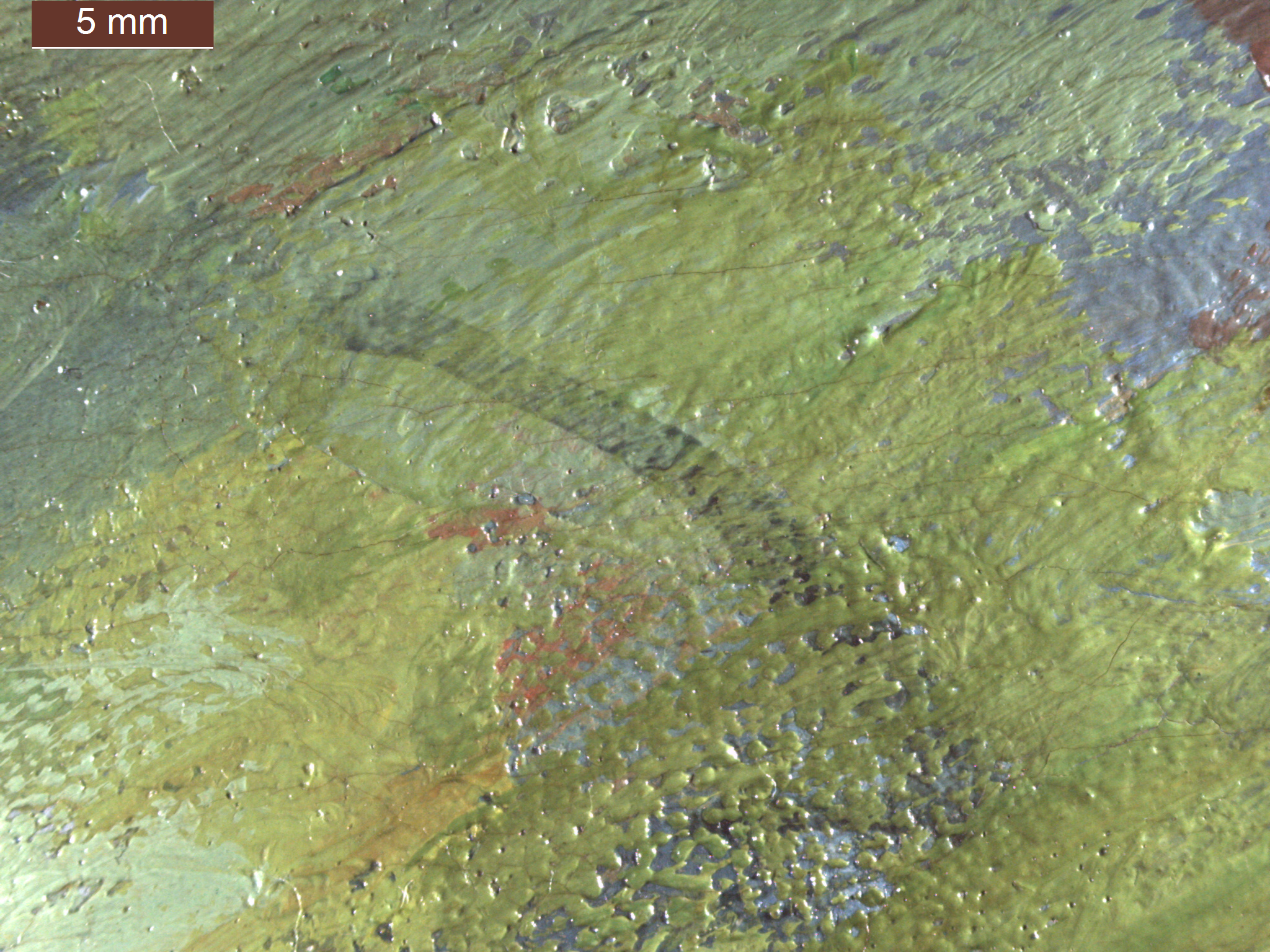 Fig. 10. Photomicrograph of blue painted line between paint passages, Quarry at Bibémus (1898–1900)
Fig. 10. Photomicrograph of blue painted line between paint passages, Quarry at Bibémus (1898–1900)
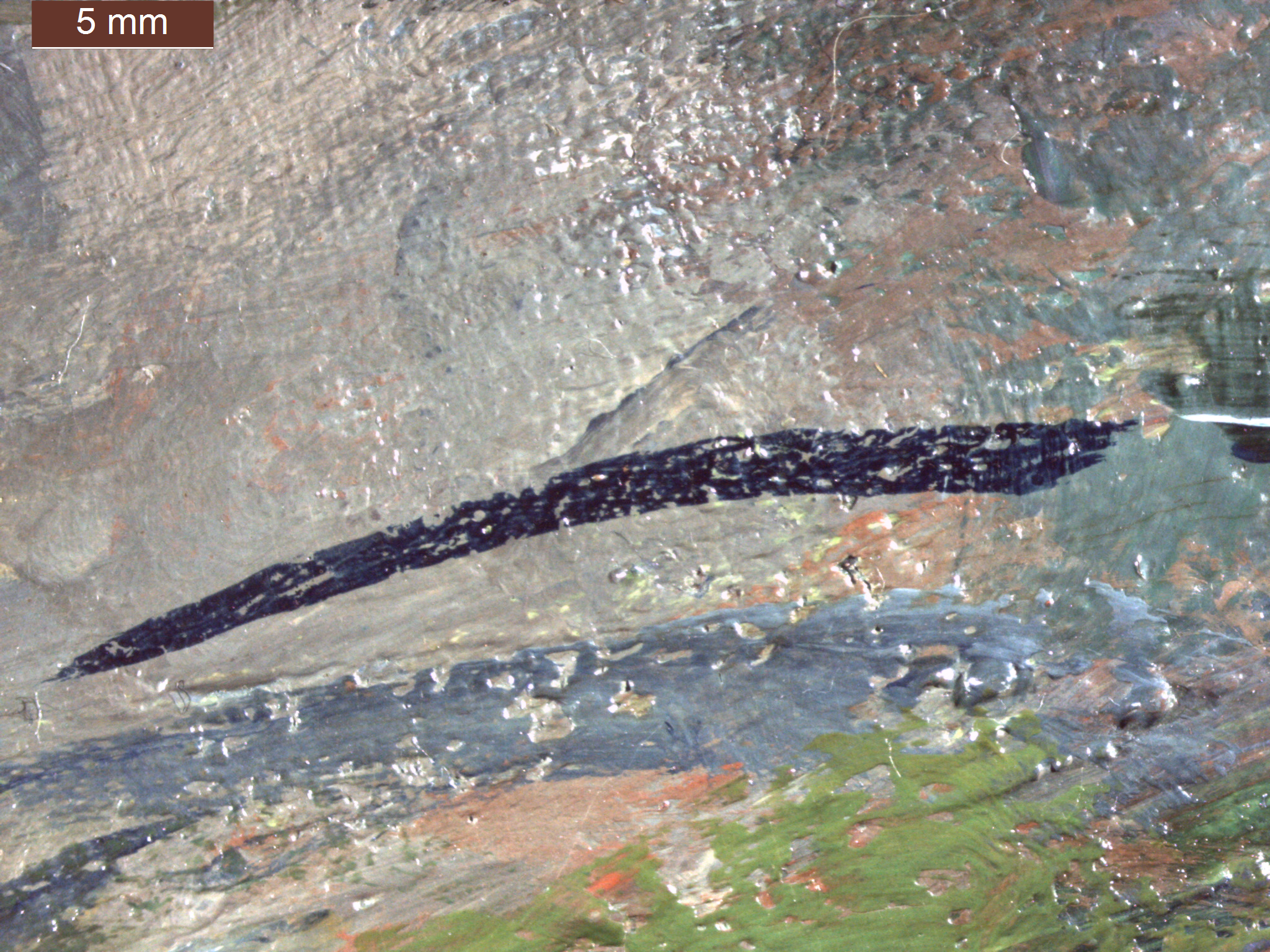 Fig. 11. Photomicrograph of blue painted line above paint passages, Quarry at Bibémus (1898–1900)
Fig. 11. Photomicrograph of blue painted line above paint passages, Quarry at Bibémus (1898–1900)
Notes
-
Diana M. Jaskierny, May 1, 2020, treatment report, Nelson-Atkins conservation file, no. 2015.13.7.
-
After taking over J. Bovard’s business in 1862, M. Chabod and his company supplied materials to artists throughout the nineteenth century. His widow continued the business into the early twentieth century, before selling it to Vignol. During the attributed dates of this painting, M. Chabod et Cie operated out of “Rue Jacob 20,” as is indicated on this painting’s canvas stamp. Pascal Labreuche, “Chabod,” Guide Labreuche: Guide historique des fournisseurs de matériel pour artists à Paris 1790–1960, 2018, accessed January 14, 2020, https://www.labreuche-fournisseurs-artistes-paris.fr/maison/bovard-chabod (site under construction as of January 6, 2021).
-
Ernst van de Wetering, Rembrandt: The Painter at Work (Berkeley: University of California Press, 2000), 116.
-
Anthea Callen, The Art of Impressionism: Painting Techniques and the Making of Modernity (New Haven: Yale University Press, 2000), 74.
-
Elisabeth Reissner, “Ways of Making: Practice and Innovation in Cézanne’s Paintings in the National Gallery,” National Gallery Technical Bulletin 25 (2008): 14–15.
-
Bernard Dunstan, Painting Methods of the Impressionists (New York: Watson-Guptill Publications, 1983), 91.
-
No underdrawing was detected in infrared using a Hamamatsu infrared vidicon camera.
-
David Bomford, Jo Kirby, John Leighton, and Ashok Roy, Art in the Making: Impressionism (New Haven: Yale University Press, 1990), 196.
-
“The constructive stroke” was a term first used by Theodore Reff to describe the parallel brushwork often seen in Cezanne’s paintings. Impressionist and Post-Impressionist Masterpieces: The Courtauld Collection (New Haven: Yale University Press, 1987), cat. 23.
Documentation
Citation
Chicago:
Brigid M. Boyle, “Paul Cezanne, Quarry at Bibémus, 1895–1900,” documentation in ed. Aimee Marcereau DeGalan French Paintings and Pastels, 1600–1945: The Collections of the Nelson-Atkins Museum of Art (Kansas City: The Nelson-Atkins Museum of Art, 2021), https://doi.org/10.37764/78973.5.710.4033
MLA:
Boyle, Brigid M. “Paul Cezanne, Quarry at Bibémus, 1895–1900,” documentation. French Paintings and Pastels, 1600–1945: The Collections of the Nelson-Atkins Museum of Art, edited by Aimee Marcereau DeGalan, The Nelson-Atkins Museum of Art, 2021. doi: 10.37764/78973.5.710.4033.
Provenance
Citation
Chicago:
Brigid M. Boyle, “Paul Cezanne, Quarry at Bibémus, 1895–1900,” documentation in ed. Aimee Marcereau DeGalan French Paintings and Pastels, 1600–1945: The Collections of the Nelson-Atkins Museum of Art (Kansas City: The Nelson-Atkins Museum of Art, 2021), https://doi.org/10.37764/78973.5.710.4033
MLA:
Boyle, Brigid M. “Paul Cezanne, Quarry at Bibémus, 1895–1900,” documentation. French Paintings and Pastels, 1600–1945: The Collections of the Nelson-Atkins Museum of Art, edited by Aimee Marcereau DeGalan, The Nelson-Atkins Museum of Art, 2021. doi: 10.37764/78973.5.710.4033.
Paul Cezanne (1839–1906), Aix-en-Provence, 1895/99–no later than December 1899;
Purchased from Cezanne by Ambroise Vollard, Paris, stock book A, no. 3653, as Rochers rouges surmontés d’un arbre un peu parasol, by December 1899–no later than August 1936 [1];
Purchased from Vollard by the Galerie Pierre, Paris, account book no. 964, on joint account with the Galerie Alfred Daber, Paris, by August 1936–June 1937 [2];
Half-share purchased from the Galerie Alfred Daber by the Galerie Pierre, June 1937–at least 1939 [3];
With the Galerie Beyeler, Basel, January–November 1956 [4];
Purchased from the Galerie Beyeler, through Marlborough Fine Art, by Ragnar Egede Moltzau (1901–1982), Oslo, November 1956–October 1958 [5];
Probably purchased from Moltzau, through Marlborough Fine Art, by the Galerie des Arts Anciens et Modernes, Schaan, Liechtenstein, October 1958 [6];
Purchased from the Galerie des Arts Anciens et Modernes by Sam Spiegel (1901–1985), New York, October 1958–December 31, 1985 [7];
Spiegel estate, New York, 1985–May 11, 1987;
Purchased from the latter at Impressionist and Modern Paintings from the Collection of the Late Sam Spiegel, Sotheby’s, New York, May 11, 1987, lot 5, as Carrière de Bibémus, through Susan L. Brody Associates by Marion (née Helzberg, 1931–2013) and Henry (1922–2019) Bloch, Shawnee Mission, KS, 1987–June 15, 2015;
Their gift to The Nelson-Atkins Museum of Art, Kansas City, MO, 2015.
Notes
[1] A faint inscription preserved on the stretcher says “3653.” Stock book A is essentially an inventory of paintings that Vollard had on his premises in late 1899 and early 1900. Few of the entries are dated, but at least two entries following no. 3653 bear dates in December 1899. Thus Quarry at Bibémus was purchased by at least December 1899. See e-mail from Jayne Warman, independent art historian, to Brigid M. Boyle, NAMA, June 5, 2015, NAMA curatorial files.
[2] Sébastien Chaffour confirmed this joint purchase from Vollard, but did not specify the date of this transaction; see e-mail from Sébastien Chaffour, Institut national d’histoire de l’art, to Brigid M. Boyle, NAMA, June 10, 2015, NAMA curatorial files. The earliest publication to cite the Galerie Pierre as owner of Quarry at Bibémus is John Rewald and Léo Marschutz, “Cézanne et la Provence,” Le Point, no. 4 (August 1936): 4–34. Inscriptions preserved on the stretcher say “Galerie Pierre” and “964.”
[3] The Galerie Pierre became sole owner of Quarry at Bibémus in June 1937; see letter from Alfred Daber, Galerie Alfred Daber, to Pierre Loeb, Galerie Pierre, June 25, 1937, and Grand livre des comptes généraux, entry dated June 30, 1937, NAMA curatorial files. Quarry at Bibémus still belonged to the Galerie Pierre in 1939, when Loeb loaned the painting to the Musée du Prince Paul in Belgrade, Serbia, for the exhibition La Peinture Française au XIXe Siècle.
The Galerie Pierre was founded on October 17, 1924 by the Jewish dealer Pierre Loeb. The gallery was subject to the Vichy government’s Aryanization laws, and on May 16, 1941, Loeb was forced to cede control of his gallery to Georges Aubry, a fellow dealer, for 23,000 francs. Shortly thereafter, Loeb fled with his family to Havana, remaining there until the end of the war. Upon Loeb’s return to Paris in June 1945, Aubry proved reluctant to restitute the gallery to its founder, but conceded after Pablo Picasso intervened on Loeb’s behalf. Despite financial difficulties, Loeb resumed normal gallery operations in 1946; see “La Galerie Pierre au prisme des lois de Vichy,” accessed June 1, 2015, http://emmanuelle-polack.com/la-galerie-pierre-au-prisme-des-lois-de-vichy/.
[4] For dates of ownership, see e-mail from Simon Crameri, Fondation Beyeler, to MacKenzie Mallon, NAMA, May 12, 2015, NAMA curatorial files.
[5] Die Weltkunst reported on October 15, 1956 that Quarry at Bibémus was entering the collection of Moltzau; see Erhard Göpel, “Schweizer Reise,” Die Weltkunst 26, no. 20 (October 15, 1956): 9. However, the painting was still on view at the Kunsthaus Zürich at that time, and the Galerie Beyeler’s records indicate that the sale was not finalized until November 1956; see e-mail from Simon Crameri, Fondation Beyeler, to MacKenzie Mallon, NAMA, May 12, 2015, NAMA curatorial files.
Marlborough Fine Art acted as an agent for this purchase. Co-founders Frank Lloyd
and Harry Fischer and chairman David Somerset helped Moltzau build his collection
and later sell it at enormous profit; see “Kunsthandel: Marlborough-Galerie; Trio
mit Fifi,” Der Spiegel, no. 50 (December 11, 1963), https://www.spiegel.de/spiegel/print/d-46173079.html; and
David L. Shirey, “Frank Lloyd and the Marlborough: Art and Success,” New York
Times 122, no. 42,121 (May 21, 1973): 40. A backing board exhibition label from
the Kunsthaus Zürich lists the owner as “Galerie Beyeler, Basel Marlborough
Fine Art Ltd.”
In the two most recent catalogue raisonnés of Cezanne’s oeuvre, Moltzau erroneously appears before the Galerie Beyeler in the provenance for Quarry at Bibémus. See John Rewald, The Paintings of Paul Cézanne: A Catalogue Raisonné (New York: Harry N. Abrams, 1996), 503; and Walter Feilchenfeldt, Jayne Warman, and David Nash, “La Carrière de Bibémus, 1898–1900 (FWN 318),” The Paintings, Watercolors and Drawings of Paul Cezanne: An Online Catalogue Raisonné, https://www.cezannecatalogue.com/catalogue/entry.php?id=814 (last updated on July 24, 2020, accessed on August 5, 2020).
[6] Moltzau still owned Quarry at Bibémus in August 1958, when he loaned the painting to the Royal Scottish Academy, Edinburgh (August 13–September 20, 1958), for an exhibition of his collection that traveled subsequently to the Tate Gallery, London (October 3–November 2, 1958). Quarry at Bibémus was on view at both venues. Moltzau probably sold Quarry at Bibémus to the Galerie des Arts Anciens and Modernes during the course of this exhibition, again through Marlborough Fine Art, whose business operations are based in Liechtenstein. The painting may have remained on view even after the Galerie purchased it.
[7] Quarry at Bibémus was one of eight paintings that Spiegel purchased from the Galerie des Arts Anciens et Modernes in September and October 1958. See the Preface in Impressionist and Modern Paintings from the Collection of the Late Sam Spiegel (New York: Sotheby’s, 1987). It remained in Spiegel’s possession until his death.
Related Works
Citation
Chicago:
Brigid M. Boyle, “Paul Cezanne, Quarry at Bibémus, 1895–1900,” documentation in ed. Aimee Marcereau DeGalan French Paintings and Pastels, 1600–1945: The Collections of the Nelson-Atkins Museum of Art (Kansas City: The Nelson-Atkins Museum of Art, 2021), https://doi.org/10.37764/78973.5.710.4033
MLA:
Boyle, Brigid M. “Paul Cezanne, Quarry at Bibémus, 1895–1900,” documentation. French Paintings and Pastels, 1600–1945: The Collections of the Nelson-Atkins Museum of Art, edited by Aimee Marcereau DeGalan, The Nelson-Atkins Museum of Art, 2021. doi: 10.37764/78973.5.710.4033.
Paul Cezanne, Bibémus Quarry, ca. 1895, oil on canvas, 36 1/4 × 28 3/4 in. (92 × 73 cm), Barnes Foundation, Philadelphia.
Paul Cezanne, Bibémus Quarry, ca. 1898, oil on canvas, 25 5/8 x 21 1/4 in. (65 x 54 cm), private collection.
Exhibitions
Citation
Chicago:
Brigid M. Boyle, “Paul Cezanne, Quarry at Bibémus, 1895–1900,” documentation in ed. Aimee Marcereau DeGalan French Paintings and Pastels, 1600–1945: The Collections of the Nelson-Atkins Museum of Art (Kansas City: The Nelson-Atkins Museum of Art, 2021), https://doi.org/10.37764/78973.5.710.4033
MLA:
Boyle, Brigid M. “Paul Cezanne, Quarry at Bibémus, 1895–1900,” documentation. French Paintings and Pastels, 1600–1945: The Collections of the Nelson-Atkins Museum of Art, edited by Aimee Marcereau DeGalan, The Nelson-Atkins Museum of Art, 2021. doi: 10.37764/78973.5.710.4033.
Origines et développement de l’art international indépendant, Musée du Jeu de Paume, Paris, July 30–October 31, 1937, no. 20, as Les Rochers de Bibémus.
La Peinture Française au XIXe Siècle / Francusko Slikarstvo u XIX Stoleću, Musée du Prince Paul, Belgrade, Serbia, 1939, no. 7, as La Carrière de Bibémus and Trkalište Bibémus.
Exposition des maîtres des XIXe et XXe siècles, Galerie Jeanne Castel, Paris, June 14–July 12, 1955, no. 3.
Paul Cézanne, 1839-1906, Kunsthaus Zürich, August 22–October 7, 1956, no. 78, as « Carrière de Bibémus ».
Sammlung Ragnar Moltzau, Oslo, Kunsthaus Zürich, February 9–March 31, 1957, no. 17, as Carrière de Bibémus.
Collectie Ragnar Moltzau, Oslo, Gemeentemuseum, The Hague, April 19–June 11, 1957, no. 18, as Steengroeve van Bibémus.
From Cézanne to Picasso: The Moltzau Collection, Royal Scottish Academy, Edinburgh, August 13–September 20, 1958; Tate Gallery, London, October 3–November 2, 1958, no. 21, as The Bibémus Quarry.
Cézanne: The Late Work, Museum of Modern Art, New York, October 7, 1977–January 3, 1978; Museum of Fine Arts, Houston, January 26–March 19, 1978, no. 15, as Bibémus Quarry.
Cézanne: Les dernières années (1895-1906), April 20–July 23, 1978, Grand Palais, Paris, no. 39, as La Carrière Bibémus.
Post-Impressionism: Cross-Currents in European and American Painting, 1880-1906, National Gallery of Art, Washington, DC, May 25–September 1, 1980, no. 17, as The Bibémus Quarry / La Carrière Bibémus.
Cézanne in Provence, National Gallery of Art, Washington, DC, January 29–May 7, 2006; Musée Granet, Aix-en-Provence, June 9–September 17, 2006, no. 84, as The Bibémus Quarry (Washington only).
Manet to Matisse: Impressionist Masters from the Marion and Henry Bloch Collection, The Nelson-Atkins Museum of Art, Kansas City, MO, June 9–September 9, 2007, no. 23, as Quarry at Bibémus (Carrière de Bibémus).
Cezanne: The Rock and Quarry Paintings, Princeton University Art Museum, Princeton, March 7–October 15, 2020, no. 18, as Bibémus Quarry.
References
Citation
Chicago:
Brigid M. Boyle, “Paul Cezanne, Quarry at Bibémus, 1895–1900,” documentation in ed. Aimee Marcereau DeGalan French Paintings and Pastels, 1600–1945: The Collections of the Nelson-Atkins Museum of Art (Kansas City: The Nelson-Atkins Museum of Art, 2021), https://doi.org/10.37764/78973.5.710.4033
MLA:
Boyle, Brigid M. “Paul Cezanne, Quarry at Bibémus, 1895–1900,” documentation. French Paintings and Pastels, 1600–1945: The Collections of the Nelson-Atkins Museum of Art, edited by Aimee Marcereau DeGalan, The Nelson-Atkins Museum of Art, 2021. doi: 10.37764/78973.5.710.4033.
John Rewald and Léo Marschutz, “Cézanne et la Provence,” Le Point, no. 4 (August 1936): 21, (repro.), as La Carrière de Bibémus près du Château Noir.
Lionello Venturi, “Sur les dernières années de Cézanne,” Minotaure, no. 9 (1936): 35–36, (repro.), as Bibémus.
Lionello Venturi, Cézanne: Son art, son œuvre (Paris: Paul Rosenberg, 1936), no. 778, pp. 1:64, 232, 402; 2:(repro.), as Carrière de Bibémus.
John Rewald, “A propos du catalogue raisonné de l’œuvre de Paul Cézanne et de la chronologie de cette œuvre,” La Renaissance 20, nos. 3–4 (March–April 1937): 55–56, as Carrière Bibémus.
Fritz Novotny, Cézanne ([1937]; repr. London: Phaidon Press, 1948), (repro.), as View of the “Bibémus” Quarry.
Origines et développement de l’art international indépendant, exh. cat. (Paris: Musée du Jeu de Paume, 1937), as Les Rochers de Bibémus.
“Les Expositions,” Les Cahiers d’Art 12, nos. 4–5 (1937): 163.
Fritz Novotny, Cézanne und das Ende der wissenschaftlichen Perspektive (Vienna: Anton Schroll, 1938), 85.
Christian Zervos, Histoire de l’Art Contemporain (Paris: Cahiers d’art, 1938), 43, (repro.), as Carrière de Bibémus.
La Peinture Française au XIXe Siècle / Francusko Slikarstvo u XIX Stoleću, exh. cat. (Belgrade: Musée du Prince Paul, 1939), 28, 58, as La Carrière de Bibémus and Trkalište Bibémus.
Göran Schildt, Cézanne (Stockholm: Wahlström och Widstrand, 1946), 222, 227, (repro.), as Bibemus stenbrott.
Exposition des maîtres des XIXe et XXe siècles, exh. cat. (Paris: Galerie Jeanne Castel, 1955), (repro.).
Advertisement, Die Weltkunst 26, no. 22 (November 15, 1956): (repro.), as Steinbruch von Bibémus.
Kurt Badt, The Art of Cézanne, trans. Sheila Ann Ogilvie (1956; Berkeley: University of California Press, 1965), 310, 314, as Quarry of Bibémus.
Maîtres de l’art moderne, exh. cat. (Basel: Galerie Beyeler, 1956), (repro.), as Carrière de Bibémus.
Paul Cézanne, 1839–1906, exh. cat. (Zurich: Kunsthaus Zürich, 1956), 30, as « Carrière de Bibémus ».
Heinrich W. Petzet, “Altmeister der Moderne: Galerie Beyeler in Basel stellt aus,” Die Weltkunst 26, no. 19 (October 1, 1956): 8, as Steinbruch von Bibémus.
Erhard Göpel, “Schweizer Reise,” Die Weltkunst 26, no. 20 (October 15, 1956): 9.
Collectie Ragnar Moltzau, Oslo, exh. cat. (The Hague: Gemeentemuseum, 1957), as Steengroeve van Bibémus.
Sammlung Ragnar Moltzau, Oslo, exh. cat. (Zurich: Kunsthaus Zürich, 1957), 13, as Carrière de Bibémus.
Heinrich Rumpel, “Die Sammlung Ragnar Moltzau: Zur Ausstellung in Zürcher Kunsthaus,” Schweizer Monatshefte 36, no. 12 (March 1957): 989.
Erhard Göpel, “Ein großer norwegischer Sammler: Die Sammlung Ragnar Moltzau im Zürcher Kunsthaus ausgestellt,” Die Weltkunst 27, no. 5 (March 1, 1957): 5, as Steinbruch Bibémus.
H. C., “Zürich: Sammlung Ragnar Moltzau, Oslo,” Werk Chronik, supplement to Werk 44, no. 4 (April 1957): 71, as Carrière de Bibémus.
From Cézanne to Picasso: The Moltzau Collection, exh. cat. (London: Tate Gallery, 1958), (repro.), as The Bibémus Quarry.
“From Cézanne to Picasso: The Moltzau Collection,” Times (London), no. 54,248 (September 5, 1958): 5, as The Bibémus Quarry.
“Moltzau Collection in London: Awkward Arrangement at Tate Gallery,” Times (London), no. 54,272 (October 3, 1958): 14, as Bibémus Quarry.
D. L. A. Farr, “London,” Burlington Magazine 100, no. 668 (November 1958): 403, as Bibémus Quarry.
Robert William Ratcliffe, “Cézanne’s Working Methods and their Theoretical Background” (PhD diss., University of London, Courtauld Institute of Art, 1960), 22, 26.
Cézanne Watercolors: An Exhibition at M. Knoedler and Company, exh. cat. (New York: Wittenborn, 1963), 43.
Werner Hofmann, Grundlagen der Modernen Kunst: Eine Einführung in ihre symbolischen Formen (Stuttgart: Alfred Kröner Verlag, 1966), 223, 228, 503, (repro.), as Partie im Steinbruch “Bibémus.”
Sandra Orienti, L’opera completa di Cézanne (Milan: Rizzoli, 1970), no. 708, pp. 118–19, 125–27, (repro.), as Cava di pietra a Bibémus.
Sandra Orienti, The Complete Paintings of Cézanne (London: Weidenfeld and Nicolson, 1972), no. 708, pp. 118–19, 125–26, (repro.), as Rock Cave at Bibémus.
Adrien Chappuis, The Drawings of Paul Cézanne: A Catalogue Raisonné, vol. 1, Introduction and Catalogue (Greenwich: New York Graphic Society, 1973), 191.
Sandra Orienti, Tout l’œuvre peint de Cézanne (Paris: Flammarion, 1975), no. 708, pp. 118–19, 125–26, (repro.), as Carrière de Bibémus.
William Rubin, ed., Cézanne: The Late Work, exh. cat. (New York: Museum of Modern Art, 1977), 204, 242, 390-91, (repro.), as Bibémus Quarry.
Cézanne: Les dernières années (1895–1906), exh. cat. (Paris: Réunion des musées nationaux, 1978), 130–32, 241, (repro.), as La Carrière Bibémus.
Post-Impressionism: Cross-Currents in European and American Painting, 1880-1906, exh. cat. (Washington, DC: National Gallery of Art, 1980), 30, (repro.), as The Bibémus Quarry / La Carrière Bibémus.
Marianne R. Bourges, Itinéraires de Cézanne ([Aix-en-Provence]: Ville d’Aix-en-Provence, 1982), (repro.), as Carrière de Bibemus [sic].
Impressionist and Modern Paintings from the Collection of the Late Sam Spiegel (New York: Sotheby’s, 1987), (repro.), as Carrière de Bibémus.
Kunstpreis-Jahrbuch 1987: Deutsche und Internationale Auktionsergebnisse, vol. 42, pt. 1 (Munich: Weltkunst Verlag GmbH, 1987), 141, as Der Steinbruch von Bibémus.
Andrew Sinclair, Spiegel: The Man Behind the Pictures (Boston: Little, Brown, 1987), 93.
Sotheby’s: Art at Auction 1986–87 (London: Sotheby’s, 1987), 105, (repro.), as Carrière de Bibémus.
“Sale room: $2.3m buy goes to a chill room,” Times (London), no. 62,767 (May 13, 1987): 14, as Carrière de Bibémus.
Lionello Venturi, Cézanne: Son art, son oeuvre (San Francisco: Alan Wofsy Fine Arts, 1989), no. 563, pp. 1:64, 232, 402; 2:(repro.), as Carrière de Bibémus.
Denis Coutagne, “Les Paysages,” Dossier de l’art, no. 25 (September–October 1995): 25, (repro.), as Les Carrières de Bibémus.
Françoise Cachin et al., Cézanne, exh. cat. (1995; repr. New York: Harry N. Abrams, 1996), 451n2.
Charles de Lartigue, Les paysages de Paul Cézanne (Lyon: Les Créations du Pélican, 1995), 134, 173, (repro.), as La Carrière Bibémus.
Les Sites Cézanniens du Pays d’Aix: Hommage à John Rewald (Paris: Réunion des musées nationaux, 1996), 145, (repro.), as La Carrière de Bibémus.
John Rewald, The Paintings of Paul Cézanne: A Catalogue Raisonné (New York: Harry N. Abrams, 1996), no. 839, pp. 1:502–03, 561, 571, 574, 577–79; 2:293, (repro.), as La Carrière de Bibémus.
Laura M. Giles and Carol Armstrong, eds., Cézanne in Focus: Watercolors from the Henry and Rose Pearlman Collection, exh. cat. (Princeton: Princeton University Art Museum, 2002), 52n3.
Natasha Fraser-Cavassoni, Sam Spiegel (New York: Simon and Schuster, 2003), 204, 337.
Pavel Machotka, ed., On Site with P. Cézanne in Provence (2005; Marseille: Editions Crès, 2006), 90–92, 143, (repro.), as La carrière de Bibémus.
Rebecca Dimling Cochran and Bobbie Leigh, “100 Top Collectors who have made a difference,” Art and Antiques 28, no. 3 (March 2006): 90, as Bibemus [sic] Quarry.
Bobbie Leigh, “Magnificent Obsession,” Art and Antiques 28, no. 6 (June 2006): 62, 65, as Quarry at Bibémus.
“Inaugural Exhibitions Celebrate Kansas City,” Member Magazine (The Nelson-Atkins Museum of Art) (Fall 2006): 3.
Philip Conisbee and Denis Coutagne, Cézanne in Provence, exh. cat. (Washington, DC: National Gallery of Art, 2006), 189, 191, 193–95, 203, 284, 320, (repro.), as The Bibémus Quarry.
Richard R. Brettell and Joachim Pissarro, Manet to Matisse: Impressionist Masters from the Marion and Henry Bloch Collection, exh. cat. (Kansas City, MO: Nelson-Atkins Museum of Art, 2007), 12, 15–16, 122–27, 160–61, (repro.), as Quarry at Bibémus (Carrière de Bibémus).
Alice Thorson, “First Public Exhibition: Marion and Henry Bloch’s Art Collection,” Kansas City Star (June 3, 2007): E4, as Quarry at Bibémus.
Steve Paul, “Pretty Pictures: Marion and Henry Bloch’s collection of superb Impressionist masters,” Panache 4, no. 3 (Fall 2007): 20, as Quarry at Bibémus.
“Lasting Impressions: A Tribute to Marion and Henry Bloch,” Member Magazine (The Nelson-Atkins Museum of Art) (Fall 2007): 11, (repro.).
Pavel Machotka, Cézanne: La sensation à l’œuvre; The eye and the mind (Marseille: Éditions Crès, 2008), 1:(repro.); 2:217, (repro.), as La Carrière de Bibémus.
Anne Byrd, “The Brush Stroke as Catastrophe: Gasquet’s ‘Cézanne’ and the Paintings of Bibémus Quarry,” RACAR: Revue d’art canadienne / Canadian Art Review 34, no. 1 (2009): 41, (repro.), as La Carrière de Bibémus.
Carol Vogel, “O! Say, You Can Bid on a Johns,” New York Times 159, no. 54,942 (February 5, 2010): C26.
Alice Thorson, “Museum to get 29 Impressionist works from Bloch,” Kansas City Star (February 5, 2010): A1, as Quarry at Bibémus.
Thomas M. Bloch, Many Happy Returns: The Story of Henry Bloch, America’s Tax Man (Hoboken, NJ: John Wiley and Sons, 2011), 174, as Bibemus [sic] Quarry.
Pavel Machotka, Cézanne: Landscape into Art, rev. ed. (Prague: Arbor Vitae, 2014), 173, 175, 210, (repro.), as La Carrière de Bibémus.
Diane Stafford, “Bloch gift to go for Nelson upgrade,” Kansas City Star 135, no. 203 (April 8, 2015): A8.
“Nelson-Atkins Museum of Art officially accessions Bloch Impressionist masterpieces,” Artdaily.org (July 25, 2015): http://artdaily.com/news/80246/Nelson-Atkins-Museum-of-Art-officially-accessions-Bloch-Impressionist-masterpieces, as Quarry at Bibémus.
Julie Paulais, “Le Nelson-Atkins Museum of Art reçoit des tableaux impressionnistes en échange de leurs répliques,” Le Journal des arts (July 30, 2015): http://www.lejournaldesarts.fr/patrimoine/le-nelson-atkins-museum-art-recoit-des-tableaux-impressionnistes-en-echange-de-leurs.
Josh Niland, “The Nelson-Atkins Museum of Art Acquires a Renowned Collection of Impressionist and Postimpressionist Art,” architecturaldigest.com (July 31, 2015): https://www.architecturaldigest.com/story/nelson-atkins-museum-accessions-bloch-art-collection.
“Nelson-Atkins to unveil renovated Bloch Galleries of European Art in winter 2017,” Artdaily.org (July 20, 2016): http://artdaily.com/news/88852/Nelson-Atkins-to-unveil-renovated-Bloch-Galleries-of-European-Art-in-winter-2017.
“Nelson-Atkins Museum of Art celebrates generosity of Henry Bloch with new acquisition,” Artdaily.org (October 18, 2016): https://artdaily.cc/news/90923/Nelson-Atkins-Museum-of-Art-celebrates-generosity-of-Henry-Bloch-with-new-acquisition#.XnKATqhKiUk.
Catherine Futter et al., Bloch Galleries: Highlights from the Collection of the Nelson-Atkins Museum of Art (Kansas City, MO: Nelson-Atkins Museum of Art, 2016), 105, (repro.), as Quarry at Bibémus.
Kelly Crow, “Museum Rewards Donor with Fake Art to Hang at Home,” Wall Street Journal (January 25, 2017): https://www.wsj.com/articles/museum-rewards-donor-with-fake-art-to-hang-at-home-1485370768.
David Frese, “Bloch savors paintings in redone galleries,” Kansas City Star (February 25, 2017): 1A.
Albert Hecht, “Henry Bloch’s Masterpieces Collection to Go On Display at Nelson-Atkins Museum,” Jewish Business News (February 26, 2017): http://jewishbusinessnews.com/2017/02/26/henry-bloch-masterpieces-collection/.
David Frese, “Inside the Bloch Galleries: An interactive experience,” Kansas City Star 137, no. 169 (March 5, 2017): 1D, 5D, (repro.), as Quarry at Bibémus.
“Editorial: Thank you, Henry and Marion Bloch,” Kansas City Star (March 7, 2017): http://www.kansascity.com/opinion/editorials/article137040948.html [repr. “Thank you, Henry and Marion Bloch,” Kansas City Star 137, no. 172 (March 8, 2017): 16A].
Hampton Stevens, “(Not Actually) 12 Things To Do During the Big 12 Tournament,” Flatland: KCPT’s Digital Magazine (March 9, 2017): http://www.flatlandkc.org/arts-culture/sports/not-actually-12-big-12-tournament/.
Laura Spencer, “The Nelson-Atkins' Bloch Galleries Feature Old Masterworks and New Technology,” KCUR (March 10, 2017): http://kcur.org/post/nelson-atkins-bloch-galleries-feature-old-masterworks-and-new-technology#stream/0.
Victoria Stapley-Brown, “Nelson-Atkins Museum’s new European art galleries come with a ‘love story,’” Art Newspaper (March 10, 2017): http://theartnewspaper.com/news/museums/nelson-atkins-museum-s-new-european-art-galleries-come-with-a-love-story/.
Harry Bellet, “Don du ciel pour le Musée Nelson-Atkins,” Le Monde (March 13, 2017): http://www.lemonde.fr/arts/article/2017/03/13/don-du-ciel-pour-le-musee-nelson-atkins_5093543_1655012.html.
Menachem Wecker, “Jewish Philanthropist Establishes Kansas City as Cultural Mecca,” Forward (March 14, 2017): http://forward.com/culture/365264/jewish-philanthropist-establishes-kansas-city-as-cultural-mecca/ [repr. in Menachem Wecker, “Kansas City Collection Is A Chip Off the Old Bloch,” Forward (March 17, 2017): 20–22].
Juliet Helmke, “The Bloch Collection Takes up Residence in Kansas City’s Nelson Atkins Museum,” Blouin ArtInfo International (March 15, 2017): http://www.blouinartinfo.com/news/story/2005267/the-bloch-collection-takes-up-residence-in-kansas-citys.
Louise Nicholson, “How Kansas City got its magnificent museum,” Apollo: The International Art Magazine (April 7, 2017): https://www.apollo-magazine.com/how-kansas-city-got-its-magnificent-museum/, (repro.), as Quarry at Bibémus.
Lilly Wei, “Julián Zugazagoitia: ‘Museums should generate interest and open a door that leads to further learning,'” Studio International (August 21, 2017): http://studiointernational.com/index.php/julian-zugazagoitia-director-nelson-atkins-museum-of-art-kansas-city-interview, (repro.), as Quarry at Bibémus.
Robert D. Hershey Jr., “Henry Bloch, H&R Block’s cofounder, dies at 96,” Boston Globe (April 23, 2019): https://www.bostonglobe.com/metro/obituaries/2019/04/23/henry-bloch-block-cofounder/Vj42N3pMidFGni38EUajyO/story.html.
Robert D. Hershey Jr., “Henry W. Bloch, Tax-Preparation Pioneer (and Pitchman), Is Dead at 96,” New York Times (April 23, 2019): https://www.nytimes.com/2019/04/23/obituaries/henry-w-bloch-dead.html.
Claire Selvin, “Henry Wollman Bloch, Collector and Prominent Benefactor of Nelson-Atkins Museum of Art, Is Dead at 96,” ArtNews (April 23, 2019): http://www.artnews.com/2019/04/23/henry-bloch-dead-96/.
Eric Adler and Joyce Smith, “Henry Bloch, co-founder of H&R Block, dies at 96,” Kansas City Star 139, no. 219 (April 24, 2019): 1A.
“Henry Wollman Bloch (1922-2019),” Artforum (April 24, 2019): https://www.artforum.com/news/henry-wollman-bloch-1922-2019-79547.
Frank Morris, “Henry Bloch, Co-Founder Of H&R Block, Dies At 96,” NPR (April 24, 2019): https://www.npr.org/2019/04/24/716641448/henry-bloch-co-founder-of-h-r-block-dies-at-96.
Ignacio Villarreal, “Nelson-Atkins mourns loss of Henry Bloch,” ArtDaily.org (April 24, 2019): http://artdaily.com/news/113035/Nelson-Atkins-mourns-loss-of-Henry-Bloch#.XMB76qR7laQ.
Eric Adler and Joyce Smith, “H&R Block co-founder, philanthropist Bloch dies,” Cass County Democrat Missourian 140, no. 29 (April 26, 2019): 1A.
Eric Adler and Joyce Smith, “KC businessman and philanthropist Henry Bloch dies,” Lee’s Summit Journal 132, no. 79 (April 26, 2019): 1A.
Luke Nozicka, “Family and friends remember Henry Bloch of H&R Block,” Kansas City Star 139, no. 225 (April 30, 2019): 4A [repr. Luke Nozicka, “Family and friends remember Henry Bloch of H&R Block,” Kansas City Star 139, no. 228 (May 3, 2019): 3A].
John Elderfield, ed., Cezanne: The Rock and Quarry Paintings, exh. cat. (Princeton: Princeton University Art Museum, 2020), 106, 119, 122–25, 126n17, 127n14, 160, (repro.), as Bibémus Quarry.
Walter Feilchenfeldt, Jayne Warman, and David Nash, “La Carrière de Bibémus, 1898–1900 (FWN 318),” The Paintings, Watercolors and Drawings of Paul Cezanne: An Online Catalogue Raisonné, https://www.cezannecatalogue.com/catalogue/entry.php?id=814 (last updated on March 16, 2020, accessed on April 8, 2020), (repro.), as La Carrière de Bibémus.
Megan McDonough, “Henry Bloch, whose H&R Block became the world’s largest tax-services provider, dies at 96,” Washington Post (April 23, 2019): https://www.washingtonpost.com/local/obituaries/henry-bloch-whose-handr-block-became-worlds-largest-tax-services-provider-dies-at-96/2019/04/23/19e95a90-65f8-11e9-a1b6-b29b90efa879_story.html.
Eric Adler, “Sold for $3.25 million, Bloch’s home in Mission Hills may be torn down,” Kansas City Star 141, no. 90 (December 16, 2020): 2A.

